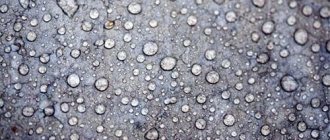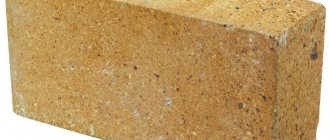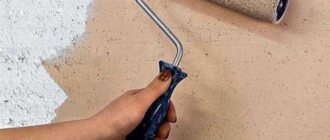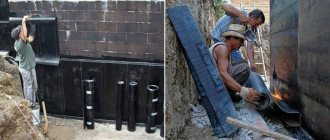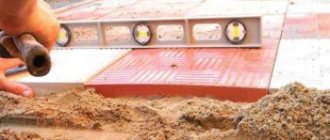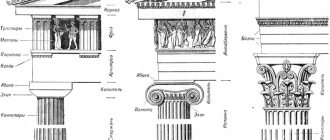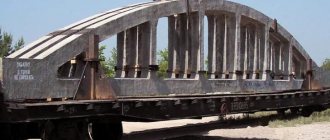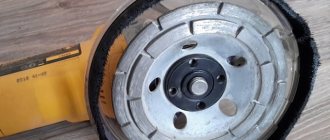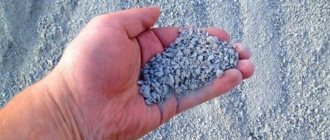Despite the fact that granite and marble are among the most durable and popular materials used in the ritual industry, in order for a monument to last for a really long time, it must be installed correctly.
In order to install a monument on a granite base, reinforcement is usually used in combination with glue. Epoxy glue is best suited for a monument installed on the street , since such glue works well both at negative and positive temperatures. Other glues can only work when positive, which is not suitable for our cold winters.
For example, when using polyester glue outdoors (operating temperature from 0 to + 110 degrees Celsius), it may seem that the monument has gripped the base well, but there is no need to rejoice ahead of time, because this connection will receive the main load over time, when temperatures change from negative to positive and back, i.e. the connection may become unusable only after 2-3 years.
Therefore, if you need to glue a granite monument to a grave (when gluing granite-granite), in order to be completely confident in such a connection, you must use epoxy adhesives . And because About 80-90% of monuments on the Russian market are made of black granite, then you can use glue already painted black. The adhesive for granite monuments Rivo-15 nero from Tenax has proven itself well.
Go to category: Epoxy adhesives
Why is the granite slab of the monument destroyed?
In order for a granite monument to last a long time, it is necessary not only to install it correctly, but also to protect it from external pollutants/precipitation, because everyone knows that “water wears away stones,” i.e. The monument, and the entire complex, must be covered with a “water repellent,” but Not every water repellent is suitable for these purposes, since it is necessary to maintain the vapor permeability of the material, because water stuck in the material, with a difference in temperature, will destroy the material. A coating from Tenax Proseal is perfect for these tasks (if you need protection without changing the color of the material). Or Ager, if you want to enhance the color of the material being processed.
What influences the choice of adhesive for granite?
First of all, you need to know where you will mount the granite, on the wall or on the floor. Since not only the choice of glue, but also the features of fastening depends on this.
Mortar for granite when laying on the floor
When laying granite tiles on the floor, you can use both cement mortars and special adhesives for natural stone. There are no special features here. Since the solution must be applied to the surface as densely as possible so that there are no voids left and the load is distributed evenly during hardening.
Mortar for laying granite on the wall
In order to lay granite on the wall, glue for natural stone is used. It should be noted that if you use only glue, the process of covering the wall will take quite a long time, since the glue hardens for quite a long time. In addition, this will lead to increased costs, since glue is quite expensive, and quite a lot of it is needed. Therefore, a combination of glue and concrete mortar is used.
The second method of attaching stone to a wall uses glue and concrete mortar, as mentioned above. But the glue is not applied to the entire surface of the tile, but only to the middle. This way, after attaching the stone, you will have voids between the wall and the stone. Due to this, the glue sets much faster. But you need to get rid of the voids. To do this, after you lay out 2-3 rows of granite slabs, the distance between them and the wall must be filled with concrete mortar. In this way, all voids will be filled and the structure will gain greater strength. Just keep in mind that you need to pour concrete only after the glue has hardened, otherwise the pressure of the concrete may simply squeeze out the slabs.
Also, with this method, it is necessary to first secure the reinforcing mesh to the wall.
Advantages of granite adhesive
As was said earlier, using the “wrong” glue for granite may not immediately (in the first year) affect the quality of your connection, but over time the connection may still fail. For example, when using cement, after a few years, the adhesive joint may begin to crack; when using polyester adhesives, when there is a difference in temperature, the adhesive may peel off from the surface of the material due to the different coefficient of thermal expansion. Therefore, it is necessary to use epoxy glue (for gluing granite-granite), because it, together with the material, will expand and contract over time, and has increased gluing force (adhesion).
Go to category: Granite adhesive
Adhesive for natural stone
Wild stones have special parameters that must be taken into account when working with them. This also applies to the solutions that will attach them to the base. The adhesive mixture may also be needed when creating stone countertops.
Wild stones have special parameters that must be taken into account when working with them.
What composition should it be, technical characteristics
Recommendations from specialists can make it easier to choose the product used to glue stones. Adhesive for natural stone must have the following characteristics:
- Stones of natural origin are heavy, so the adhesion index must be high;
- The thermal expansion characteristics at the base where the material will be fixed and at the stone elements themselves can vary significantly. This requires the ability of the adhesive solution to change linearly;
- Adhesive for facade stone must withstand exposure to natural factors;
- The surface of the material is not always smooth, the edges may not be smooth, so installation can take a long time, which creates the need for a long time to use glue.
Thus, the adhesive solution is required to be able to be used for at least 3 hours and to be able to withstand a load of up to 70-80 kg/m². Adhesive for natural stone for exterior use must be frost-resistant and water-resistant.
Adhesive for facade stone must withstand exposure to natural factors.
Species diversity
Today there are many different options for epoxy adhesives and grouts on the market, but when choosing one or another adhesive, you must carefully study the instructions. The first thing you should pay attention to is the operating temperature. When gluing light-colored materials, you need to pay attention to the tendency to yellowing, because a yellow seam on a white material does not look very aesthetically pleasing. You also need to pay attention to the strength of gluing (adhesion).
Two-component epoxy compounds
As mentioned earlier, for gluing a monument and a granite base, it is best to use two-component epoxy adhesives due to its characteristics. Our store presents epoxy adhesives from 3 different manufacturers (tenax, Bellinzoni and Akemi) having the same parameters listed above (operating temperature, adhesion), but different viscosity (one master will want to make the seam less noticeable (squeeze) and will prefer a softer glue, and another will want to use a thicker composition, because he wants to repair small chips and needs the glue not to drip), work time (some are ready to wait a day, while others need to finish everything in one day), tendency to yellowing and a tendency to form “halos” (on white marble monuments the yellow seam will not look aesthetically pleasing, but on dark ones it may not be very noticeable).
Go to category: Epoxy adhesives
Polyester adhesive for gluing granite
Often our clients use polyester glues and mastics to glue a monument to a granite base. Since they are quite cheap, have a large palette of colors, and are also easy to paint, since you can make the seam invisible. But, as mentioned earlier, these adhesives are only suitable for cities with warm climates (since adhesives work at positive temperatures from 0 to +110 degrees). Also, these adhesives are usually used for masticating and/or sealing seams, but when the seam will withstand high load (“structural”), it is better to give preference to epoxy compounds (since the adhesive strength of such adhesives, in comparison with colored polyester mastics, is twice as strong higher).
Go to category: Polyester adhesives
Impregants
Correctly installing and gluing the monument is not enough for the monument to serve for a long time; it is necessary to use impregnants or, more commonly, protective coatings. Such coatings will allow, if necessary, to hide microcracks. And also increase the resistance of the material to external pollutants/precipitation. Because Moisture that gets into the material due to temperature differences destroys it.
Cement
Often, when gluing a monument to a granite base, cement-based adhesives are used; such adhesives are excellent for gluing granite to a concrete base, but they are not very suitable for gluing granite to a granite base, since after a few seasons, such a connection may crack.
Laying marble and granite.
The most important technological aspect of surface cladding is the preparation of the base for laying stone slabs. It should be smooth, strong, without cracks or dirt. The layer of plaster or putty should not peel off or crumble; no deposits or substances that reduce the adhesiveness of the base are allowed on the surface. It is also necessary to check what materials the previously prepared layers are made of. Seamless cement bases should mature for about 28 days, their moisture content should not exceed 2%, and the moisture content of anhydrite coatings should not exceed 0.5%. Before laying stone or leveling the base with putty, you should use a primer intended for this type of base, which can be replaced with preparations that increase the adhesiveness of the base.
The most important technological aspect of surface cladding is the preparation of the base for laying stone slabs. It should be smooth, strong, without cracks or dirt. The layer of plaster or putty should not peel off or crumble; no deposits or substances that reduce the adhesiveness of the base are allowed on the surface. It is also necessary to check what materials the previously prepared layers are made of. Seamless cement bases should mature for about 28 days, their moisture content should not exceed 2%, and the moisture content of anhydrite coatings should not exceed 0.5%. Before laying stone or leveling the base with putty, you should use a primer intended for this type of base, which can be replaced with preparations that increase the adhesiveness of the base.
Today in world construction there are three main ways of laying stone slabs. Let's look at them in detail.
Laying marble and granite with mortar.
This method, dominant in the recent past, is not so popular today due to the increased risk of the “post-installation” unpleasant phenomena we mentioned. For such flooring, we recommend dense stone with low water absorption rates and an underlying layer - a mixture of Portland cement (100 kg) and slaked lime (100 kg) per 1 cubic meter of clean river sand with a grain size of no more than 3 mm, mixed with water to the consistency of a dough-like mass. A thin layer of cement is placed on the solution, moistening it abundantly, and a marble or granite slab is sunk into it. In the case of wall cladding, it is enough to apply the prepared solution to the base. The quality of adhesion of the stone to the mortar is controlled by lifting the tile and checking the presence of the composition on its back side, and the appearance of a film on the mortar and voids under the tile are not allowed. Upon completion of installation, the mortar protruding from the joints should be removed and the joints should be grouted traditionally or watered with sand-cement milk (for slab thicknesses of 20-50 mm).
Laying marble and granite with adhesive.
This is the most popular method these days due to the speed of work and the ability to completely eliminate negative “post-laying” phenomena. For this installation, special adhesive sealing compounds are used. If the underlying layer has high porosity (cellular concrete, gypsum), an intermediate self-leveling primer layer is laid between the screed and the slabs.
Both one-component and two-component compositions are used as adhesives for laying marble and granite slabs. One-component adhesive is a finely dispersed cement powder containing organic binders. Before use, it is simply diluted with water and nothing is added to it, unlike two-component glue - cement powder modified with resins. There is also another type of two-component glue - resin with a hardener. Before use, such adhesives are mixed with a mixer until smooth. When selecting a particular type of glue, you should take into account the expected load on the coating, its operating conditions, guided by the manufacturer’s certificate or technical data sheet.
The adhesive composition is applied with a notched trowel first to the prepared base, then to the back side of the stone slabs, having previously taken care that there is no dirt, dust, oil stains, etc. on it. The newly laid slabs are carefully lifted with a trowel to control the quality of adhesion of the glue to the stone. In this case, you need to make sure that the applied glue does not become crusty. The seams are sealed upon completion of installation using elastic silicone sealants, but only after the composition on which the slabs are laid has completely hardened. Before sealing, the seams must be cleaned of any remaining glue and moistened with a damp sponge.
Laying marble and granite on a metal frame using metal fasteners
.
This method is used when it comes to covering vertical and inclined surfaces with stone tiles with a thickness of 10 mm or more, when laying marble and granite slabs on raised floor structures and finishing walls using the “ventilated facade” technology. When it comes to wall tiles, there are two methods of fixing them. In the first case, the tiles are placed on a previously prepared wall simultaneously with fastening with metal fasteners in combination with filling the cavity with cement-sand mortar or anti-vandal backfill; in the second, the facing slabs are installed piece by piece simultaneously with fastening using stainless wire or special mechanical fasteners. When finishing walls using the “ventilated facade” technology, a load-bearing frame is installed on the outer sides of the external walls, on which marble and granite slabs are attached, and a layer of heat-insulating material is placed in the gap between the wall and the cladding.
The most common type of raised floor these days is a design made of a load-bearing metal frame, including a set of adjustable vertical posts and transverse load-bearing stringer beams, and modular multilayer panels. Each such panel is a multilayer structure consisting of a base slab (substrate), a high-strength chipboard and a decorative coating glued to it - a marble or granite slab
.
Cost of laying marble and granite.
Review of popular brands of glue for tombstones
There are several products included in our rating, and our commentary will help you choose one or another product, a feature due to which customers often prefer this product:
| Rivo-15 Nero from Tenax | Suitable for installing a monument in Moscow and St. Petersburg, since it has an operating temperature of -25 to + 60 degrees. The glue is already painted black, so it is perfect for gabbro monuments. Advantage: low price (compared to other professional epoxy adhesives for natural stone). black thick 1+1l beige thick 1+1l |
| Domo-10 from Tenax | The glue is suitable for cities where the thermometer drops to -50 degrees. Has increased adhesive strength compared to other epoxy compounds. black thick 1+1l white thick 1+1l |
| Akepox 5010 from Akemi | Usually used when it is necessary to make the adhesive connection as inconspicuous as possible; the adhesive is transparent in a thin layer, perfect for restoring chips on a monument. Disadvantage: High price. transparent thick 1.5+0.75kg |
What are there
Nowadays, adhesives for granite based on polyester and epoxy are especially valuable. These are products that consist of 2 parts and have excellent technical and operational properties. Their price is higher than their analogues, but their quality is many times higher. With them, precision is important, from mixing to waiting for the mixture to completely harden. But other types do not lose popularity, including cement compositions and impregnants.
Features of polyester adhesives
Polyester includes solid, semi-liquid and liquid adhesives. They come in different colors, which is why they are used in the design of decorative elements.
The most famous compositions of this series are Tenax Solido and Bellinzoni Mastice. The first is excellent for gluing granite to various surfaces, including enameled stone. Bellinzoni Mastice-2000 is better suited for interior decoration, for example, when creating a mosaic pattern. But they are not frost-resistant, so it is not advisable to use them outside in harsh climatic conditions.
You can use the famous Solido Quarzo glue. It is made for natural stone. Before use, it must be mixed with a hardener.
Two-component epoxy compounds
Epoxy adhesive mixtures are characterized by increased strength. Such compositions combine granite well with concrete and iron. The glue will help restore and repair the stone product, which will then last for many years.
Reference! Two-component products consist of glue and solvent. To obtain the finished adhesive, these components are mixed.
Well-known representatives of epoxy compounds:
- Bellinzoni - is very durable and resists aggressive agents.
- Isomat – for granite and other stones.
- Akepox 1005 - designed to eliminate cracks and crevices in structures.
Impregnants
Impregnants are used to fill joints and seams. They are frost-resistant, so they can be used for exterior decoration without any problems. After hardening, they can be sanded and watered. Representatives – Aquapox, Imprepox. These products have good fluidity, penetrating into the smallest pores for maximum strengthening of granite.
Cement compositions
Cement adhesive may contain additives that make it frost-resistant. For example, frost-resistant products for different temperatures are produced by Unis, Ceresit, Knauf, Graniplix. There are many such adhesives; you need to choose based on the information that the manufacturer indicates on the product packaging.
How to do gluing
In order to glue granite to a granite base we will need: a drill for granite, reinforcement, two-component epoxy glue, acetone, a spatula, a container for mixing the glue (you can use cardboard or a piece of stone).
We’ll skip the drilling for rebar, everything is more or less clear here, the main thing is to choose the right drill. But some of our clients manage to drill granite with ordinary concrete drills; we do not recommend doing this, since there is a possibility of splitting the material. Afterwards it is necessary to clean the bonded surfaces and treat them with acetone. Next, let's move on to preparing the glue. The main thing when mixing two-component adhesives is to get the proportions exactly right; experienced craftsmen, of course, can do this by eye, but we recommend using scales, because only getting the proportions exactly right can guarantee you the reliability and strength of the gluing for many years. After you have measured the required amount of both components, you need to mix them thoroughly. (Only thorough mixing will guarantee the correct functioning of the adhesive). After the composition is ready, apply it in a thin layer and place the monument on the base. Then remove excess glue, because after the glue has completely cured, it will be very easy to remove it from the surface. It's difficult - you'll have to resort to grinding.
Epoxy adhesives
The two-component adhesive for this type of marble has such high strength that it is very difficult to separate the glued element from the surface.
Due to its high level of strength, epoxy adhesive perfectly glues elements made of marble, granite, and is suitable for working with iron and concrete. The substance consists of two components - the glue itself and the fixative. Among all the epoxy adhesive products available in stores, the following brands stand out for their high quality:
- Akepox 1005. Used to seal cracks and pores that have appeared on natural stone.
- Bellinzoni. The main properties are increased strength, resistance to solvents, acids and alkalis, excellent adhesive characteristics.
- Isomat Ak-epoxy normal. Does not contain solvents. Designed for gluing granite and marble surfaces to surfaces of other materials.
How to update a granite monument
Despite the fact that granite and marble are durable materials, over time, monuments made from them can absorb dirt, and the polishing can be damaged by wind and sand. And to renew such a monument, sometimes it is enough to wash it with a specialized cleaner (depending on the pollutant, choose one or another cleaner), and you can also apply a “wet stone” (Ager) coating to the monument (coating to enhance the color), you can also use wax (tewax) or polish (luxline plus), if after cleaning you realize that you don’t have enough shine. If this does not help, then you will have to resort to more expensive repolishing.
Go to category: Cleaners Wet Stone Coatings Polishes
How to glue a photo to a granite tombstone
If you have already purchased the correct glue for gluing a monument to a granite base, you can also use it to glue a photograph. To ensure that your photo holds up well, we recommend:
- Sand the surface of the monument (you can make notches) and the back side of the photograph, then degrease with acetone;
- Apply glue to the back of the photo and press it to the monument;
- If a photograph has to be pasted in a cemetery on an already installed monument, it is necessary to secure it with rope, wire or other available means to avoid sliding;
- Excess glue must be removed immediately using a rag and acetone.
